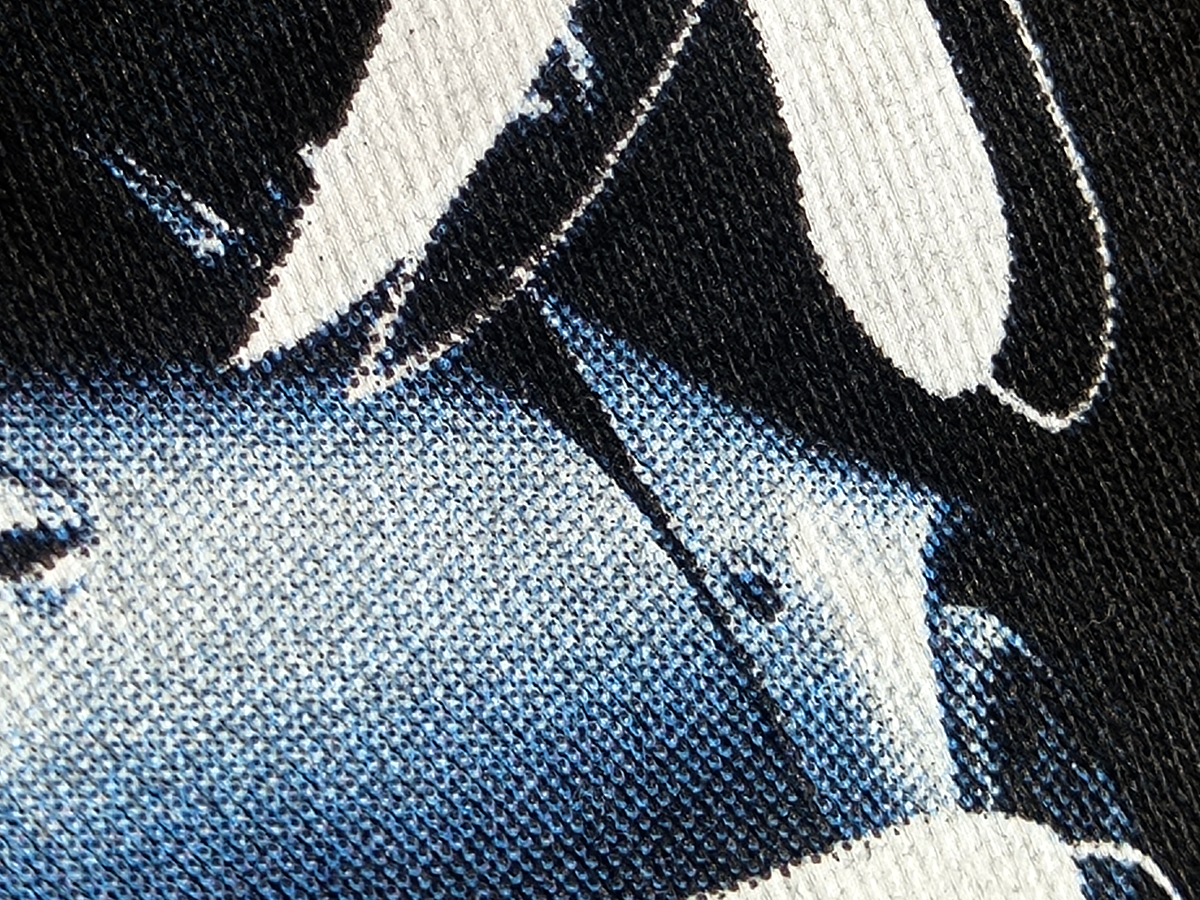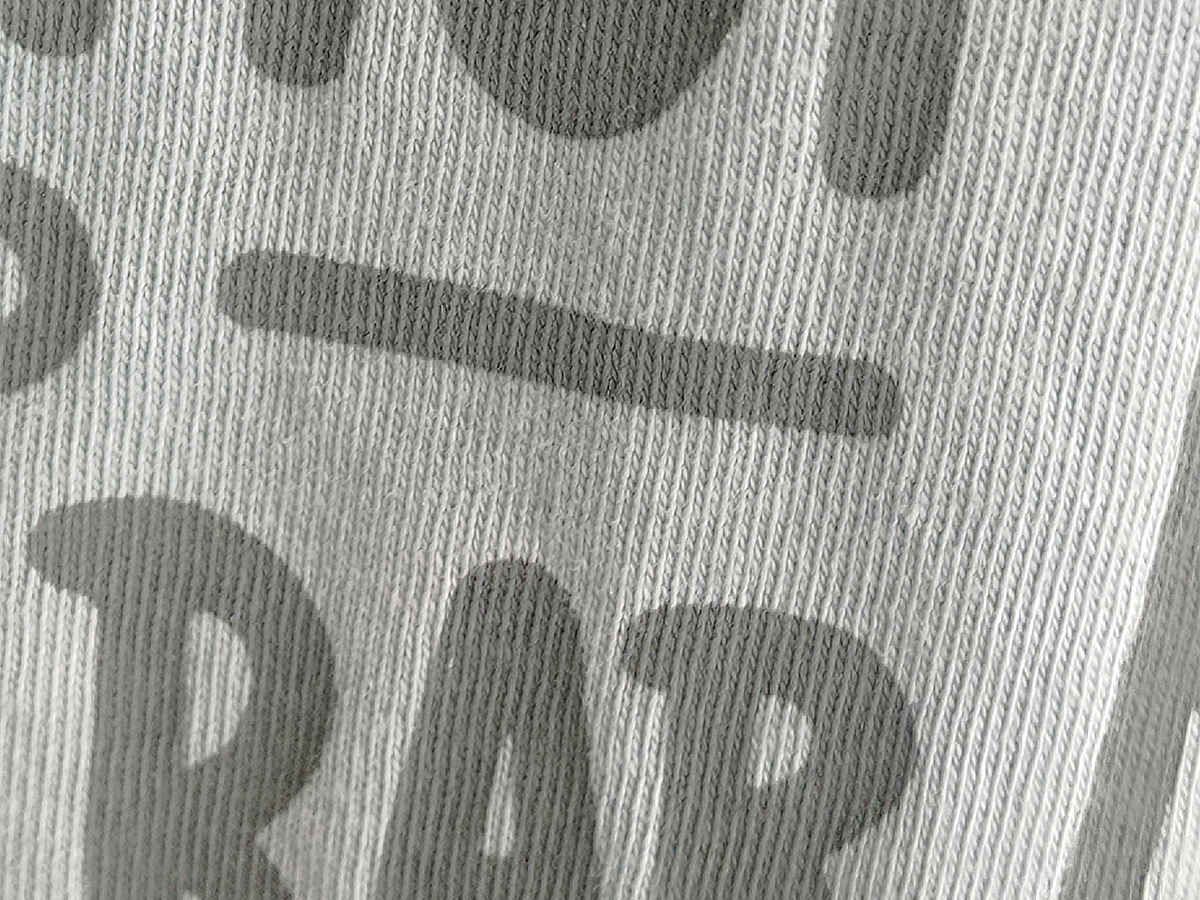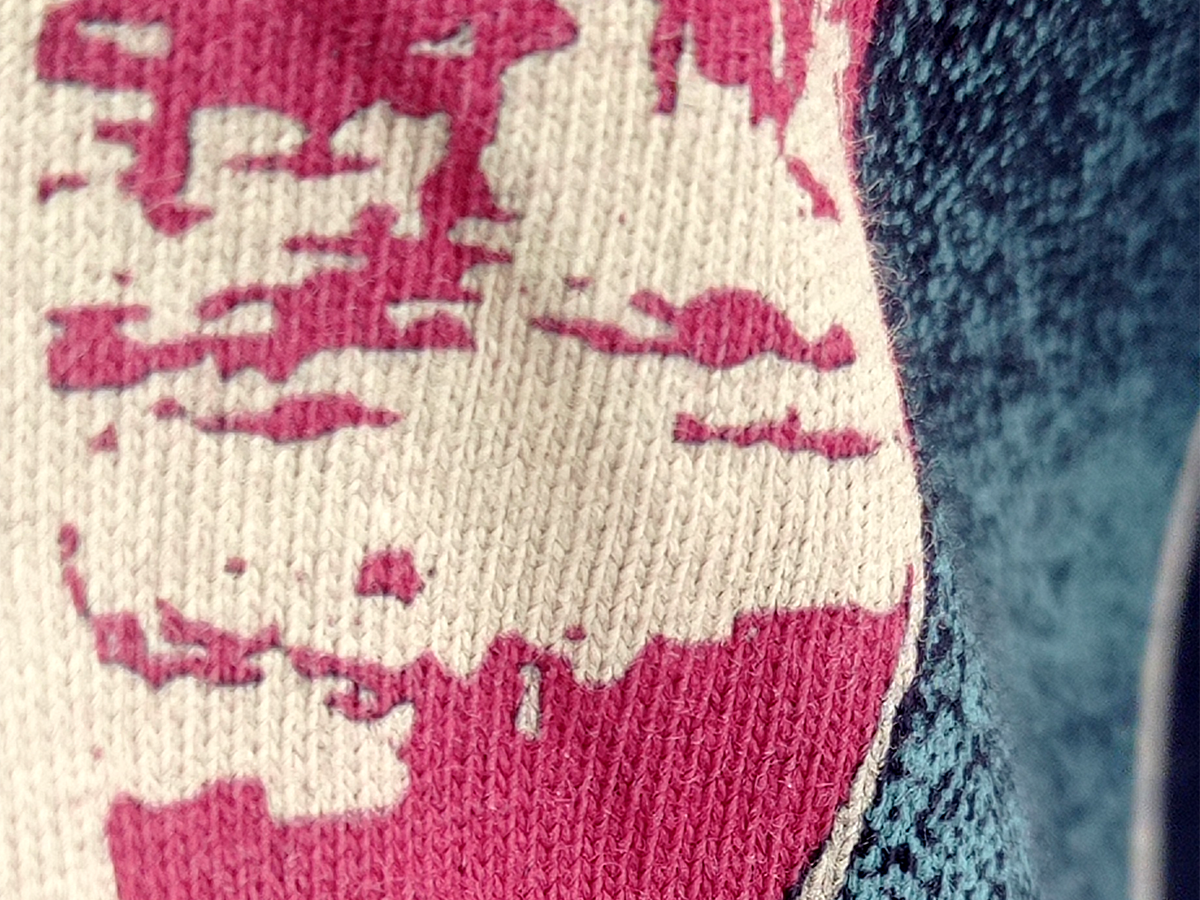In screen printing, different types of inks are used, selected depending on the material on which the print is to be applied and the effect desired. This technique offers many possibilities and allows achieving various special effects.
Plastisol inks
Plastisol inks are a popular choice due to their durability and vivid colors. They are most often used on black and dark textiles with a white underbase that makes the colors more saturated. They provide 100% opacity, but the print may feel harder to the touch than one made with water-based inks.

Advantages of plastisol inks:
Color intensity
Possibility of achieving bright, neon colors
Very good coverage
Disadvantages of plastisol inks:
Tactile feel of the print
Less eco-friendly compared to water-based inks
Need for a base layer to achieve an intense effect
Water-based inks
Water-based inks are water-based and popular due to their ecological properties and natural final effect. They are mainly used on light and white fabrics without the need for a base layer. They are characterized by prints that are unnoticeable to the touch because the ink penetrates the fabric structure instead of forming a layer on its surface. This gives the impression that the print "breathes". Compared to plastisol inks, colors are less intense and have a matte appearance.

Advantages of water-based inks:
Eco-friendliness
Delicacy and durability
No surface layer – the print "breathes"
Disadvantages of water-based inks:
Weaker coverage
Cannot achieve bright colors
Very poor coverage on dark fabrics
Discharge inks
Discharge inks are special inks in which, instead of standard dyes, discharge inks are used. During printing, the dye is removed from the material and replaced with a new color. These inks are used on dark and black fabrics made of 100% cotton. They are characterized by being unnoticeable, delicate, and durable – especially after the first wash. Due to the discharge process, colors may differ from those shown in the Pantone scale.

Advantages of discharge inks:
Ability to achieve a vintage effect
Complete unnoticeability of the print after the first wash
Very durable print
Disadvantages of discharge inks:
Less eco-friendly than water-based and plastisol inks
Only works on 100% cotton fabrics
Color may change during the printing process
Use of inks depending on the technique and fabric color
Technique / Garment color | Water-based ink | Plastisol ink without base | Plastisol ink with base | Discharge ink |
|---|---|---|---|---|
Light fabrics | Recommended – soft and durable print | Possible, but the print is more delicate | Not recommended – creates a tactile layer | Not performed – the same effect is achieved with water-based ink |
Dark fabrics | Not recommended – color does not provide good coverage | Not recommended – color loses intensity and coverage | Recommended – intense color | Recommended – soft print, but poor color reproduction |

